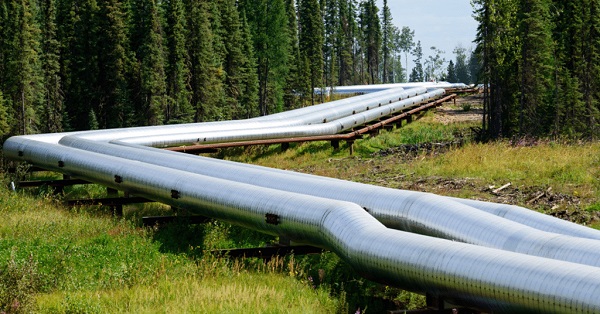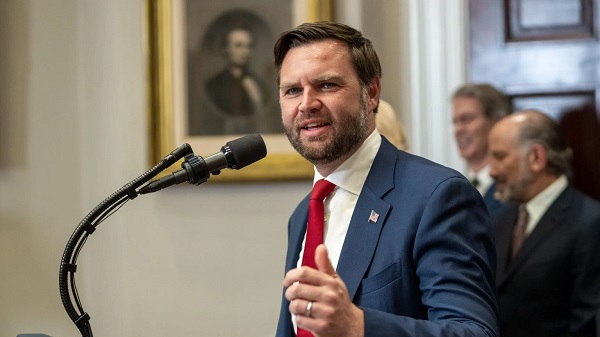Energy
The 2015 Paris agreement outdated by AI advancement

From Resource Works
Evolving economy is running circles around green ambitions
In 2015 world leaders met in Paris to set the course for climate action and agreed to limit global warming to well below 2°C above pre-industrial levels. Those targets relied heavily on getting to 100% renewable energy, electrifying transport and reducing fossil fuels. But one big factor was left out of those plans: the rapid growth of artificial intelligence (AI) and the massive energy it’s consuming. Now as AI is becoming a pillar of the global economy, climate goals remain stagnant, and we need to ask the big questions about how we reconcile progress with responsibility.
AI’s rapid growth, especially since the introduction of generative AI tools like ChatGPT and MidJourney, has upended industries and created unprecedented demand for computer power. Training and running advanced AI models requires vast amounts of energy, mostly to power the data centers where the computations are done. These facilities use as much electricity as a medium sized city and are straining local grids and making it harder to decarbonize the power system.
The scale of this demand was not factored in when nations were setting their climate strategies in 2015. While many plans accounted for electrification of transport and heating, AI was still an emerging idea. Today the data center industry, driven by AI, cloud computing and internet usage, accounts for about 3% of global electricity consumption and that’s expected to rise sharply as AI adoption grows.
The energy challenges of AI are particularly acute in British Columbia, Canada where a clean electricity grid was once the foundation of the province’s climate strategy. BC Hydro, the publicly owned utility, generates most of its electricity from hydro. But recent data shows BC Hydro can’t meet domestic demand without importing electricity from neighboring regions including Alberta and the US where fossil fuels dominate the energy mix.
In the last fiscal year BC imported over 13,600 gigawatt-hours of electricity – more than double the annual output of the controversial Site C dam, a $16 billion hydro project currently under construction. Importing electricity undermines the province’s green credentials and raises questions about how it will meet future demand as data centers grow to support AI.
Climate goals initially focused on reducing emissions from transport and industrial processes are now being challenged by the energy demands of AI. For example, policies promoting electric vehicles (EVs) assumed electricity demand would grow incrementally but AI is upending those calculations. Data centers designed to power AI workloads require massive energy densities and continuous operation and are adding stress to grids already dealing with EVs and renewable energy integration.
Globally nations are facing similar dilemmas. In the US data centers are driving demand for new natural gas plants even as the federal government is committing to decarbonize the grid by 2035. Meanwhile countries like Ireland and the Netherlands have temporarily halted approvals for new data center connections to protect grid stability and meet emissions reduction targets. These tensions are highlighting the growing challenge of balancing climate goals with the demands of a digital economy which now has the added pressure of AI.
AI and its energy demands have added a new layer of complexity for climate policymakers. Some say the solution is to accelerate the transition to renewable energy and invest in advanced technologies like small modular reactors (SMRs) and energy storage. Others say it’s about improving data center efficiency through liquid cooling and more efficient chips.
But these solutions take time and capital and may not be enough to keep up with the rapid growth of AI driven energy demand. Policymakers will have to make tough choices: should resources be directed towards building more renewable capacity to support AI or should data center growth be limited? And how can we make sure AI’s benefits outweigh its costs?
The AI revolution has blown apart assumptions about energy demand and emissions reduction pathways and we need to face the reality of our existing climate strategies. As British Columbia is trying to balance the promise of AI with a sustainable future the time to act has never been more pressing. A net zero world will require not only innovation but also a willingness to confront the trade-offs that come with plugging in these transformative technologies to our planet.
Dan McTeague
Will this deal actually build a pipeline in Canada?

By Dan McTeague
Will Carney’s new pipeline deal actually help get a pipeline built in Canada? As we said before, the devil is in the details.
While the establishment and mainstream media cheer on the new pipeline agreement, there are specific details you need to be aware of.
Dan McTeague explains in his latest video.
Alberta
Premier Smith: Canadians support agreement between Alberta and Ottawa and the major economic opportunities it could unlock for the benefit of all

From Energy Now
By Premier Danielle Smith
Get the Latest Canadian Focused Energy News Delivered to You! It’s FREE: Quick Sign-Up Here
If Canada wants to lead global energy security efforts, build out sovereign AI infrastructure, increase funding to social programs and national defence and expand trade to new markets, we must unleash the full potential of our vast natural resources and embrace our role as a global energy superpower.
The Alberta-Ottawa Energy agreement is the first step in accomplishing all of these critical objectives.
Recent polling shows that a majority of Canadians are supportive of this agreement and the major economic opportunities it could unlock for the benefit of all Canadians.
As a nation we must embrace two important realities: First, global demand for oil is increasing and second, Canada needs to generate more revenue to address its fiscal challenges.
Nations around the world — including Korea, Japan, India, Taiwan and China in Asia as well as various European nations — continue to ask for Canadian energy. We are perfectly positioned to meet those needs and lead global energy security efforts.
Our heavy oil is not only abundant, it’s responsibly developed, geopolitically stable and backed by decades of proven supply.
If we want to pay down our debt, increase funding to social programs and meet our NATO defence spending commitments, then we need to generate more revenue. And the best way to do so is to leverage our vast natural resources.
At today’s prices, Alberta’s proven oil and gas reserves represent trillions in value.
It’s not just a number; it’s a generational opportunity for Alberta and Canada to secure prosperity and invest in the future of our communities. But to unlock the full potential of this resource, we need the infrastructure to match our ambition.
There is one nation-building project that stands above all others in its ability to deliver economic benefits to Canada — a new bitumen pipeline to Asian markets.
The energy agreement signed on Nov. 27 includes a clear path to the construction of a one-million-plus barrel-per-day bitumen pipeline, with Indigenous co-ownership, that can ensure our province and country are no longer dependent on just one customer to buy our most valuable resource.
Indigenous co-ownership also provide millions in revenue to communities along the route of the project to the northwest coast, contributing toward long-lasting prosperity for their people.
The agreement also recognizes that we can increase oil and gas production while reducing our emissions.
The removal of the oil and gas emissions cap will allow our energy producers to grow and thrive again and the suspension of the federal net-zero power regulations in Alberta will open to doors to major AI data-centre investment.
It also means that Alberta will be a world leader in the development and implementation of emissions-reduction infrastructure — particularly in carbon capture utilization and storage.
The agreement will see Alberta work together with our federal partners and the Pathways companies to commence and complete the world’s largest carbon capture, utilization and storage infrastructure project.
This would make Alberta heavy oil the lowest intensity barrel on the market and displace millions of barrels of heavier-emitting fuels around the globe.
We’re sending a clear message to investors across the world: Alberta and Canada are leaders, not just in oil and gas, but in the innovation and technologies that are cutting per barrel emissions even as we ramp up production.
Where we are going — and where we intend to go with more frequency — is east, west, north and south, across oceans and around the globe. We have the energy other countries need, and will continue to need, for decades to come.
However, this agreement is just the first step in this journey. There is much hard work ahead of us. Trust must be built and earned in this partnership as we move through the next steps of this process.
But it’s very encouraging that Prime Minister Mark Carney has made it clear he is willing to work with Alberta’s government to accomplish our shared goal of making Canada an energy superpower.
That is something we have not seen from a Canadian prime minister in more than a decade.
Together, in good faith, Alberta and Ottawa have taken the first step towards making Canada a global energy superpower for benefit of all Canadians.
Danielle Smith is the Premier of Alberta
-

 Business2 days ago
Business2 days agoWhy Does Canada “Lead” the World in Funding Racist Indoctrination?
-

 Business2 days ago
Business2 days agoLoblaws Owes Canadians Up to $500 Million in “Secret” Bread Cash
-

 Dan McTeague2 days ago
Dan McTeague2 days agoWill this deal actually build a pipeline in Canada?
-

 Media2 days ago
Media2 days agoThey know they are lying, we know they are lying and they know we know but the lies continue
-

 Censorship Industrial Complex1 day ago
Censorship Industrial Complex1 day agoUS Condemns EU Censorship Pressure, Defends X
-

 Economy10 hours ago
Economy10 hours agoAffordable housing out of reach everywhere in Canada
-

 Focal Points2 days ago
Focal Points2 days agoThe West Needs Bogeymen (Especially Russia)
-

 Banks2 days ago
Banks2 days agoTo increase competition in Canadian banking, mandate and mindset of bank regulators must change





